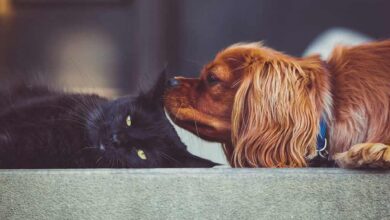10 Surprising Ways Your Pet Communicates With You: Decode Their Secret Signals

Pets may not speak our language, but they communicate with us through a wide range of behaviors, body language, and sounds. Understanding these subtle cues can help you deepen your connection with your pet and ensure they feel heard and cared for. Here are ten surprising ways your pet communicates with you, along with expert tips to make the most of your bond.
1. Eye Contact and Blinking
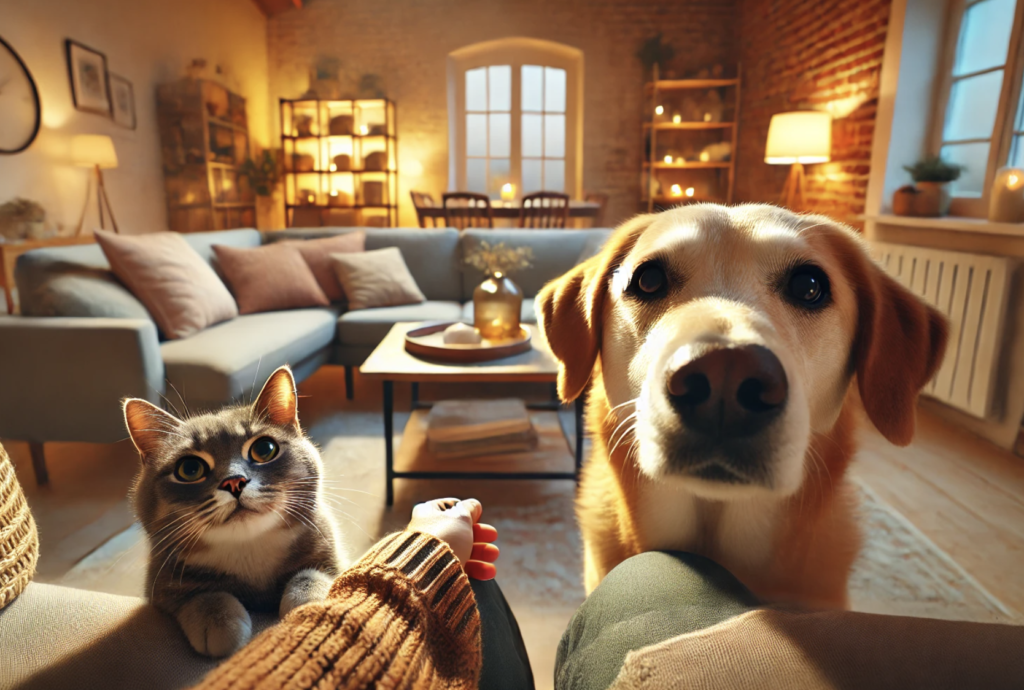
Dogs: Direct eye contact from your dog often signals affection and trust. Soft, relaxed eye contact shows they feel comfortable.
Cats: A slow blink from your cat, also known as a “kitty kiss,” signals that they trust and feel safe around you.
- Pro Tip: Whether it’s a dog or a cat, returning gentle eye contact or slow blinking shows your pet you feel the same trust and love, strengthening your bond.
2. Tail Language
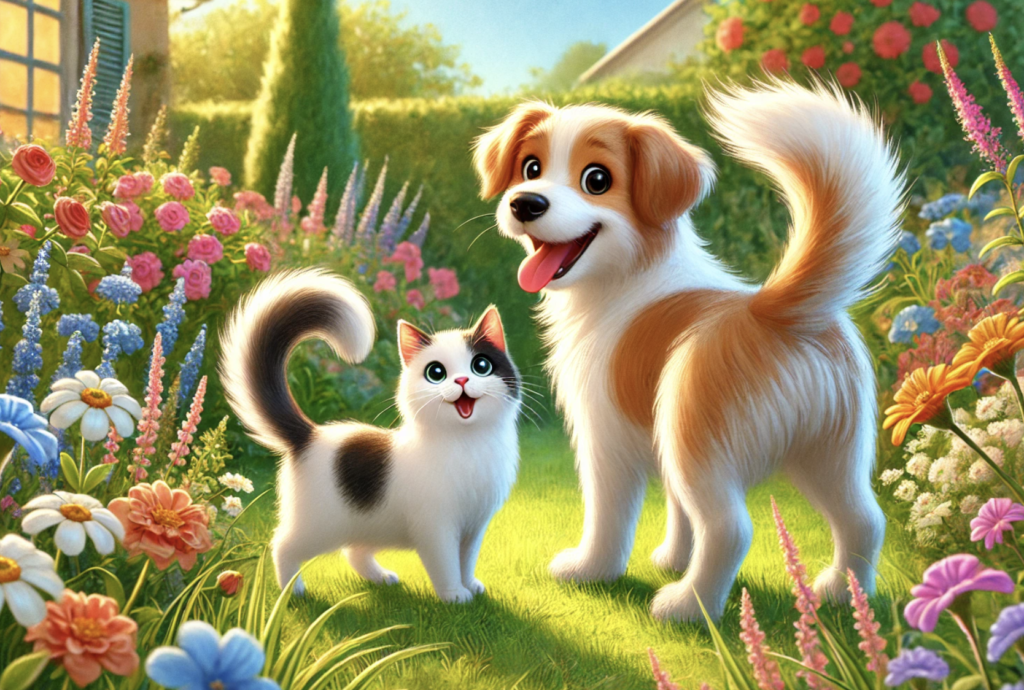
Dogs: While a wagging tail can indicate happiness, the speed and direction of the wag can signal different emotions. A slow wag may show uncertainty, while a rapid wag usually means excitement.
Cats: An upright tail with a slight curve at the tip is a friendly greeting, while a twitching or swishing tail can indicate irritation or excitement.
- Pro Tip: Pay attention to tail movements. In both dogs and cats, a slow-moving tail often indicates they’re uncertain or nervous, while fast or upright tails show excitement or friendliness. Respond accordingly by either giving them space or engaging in play.
3. Ear Positions
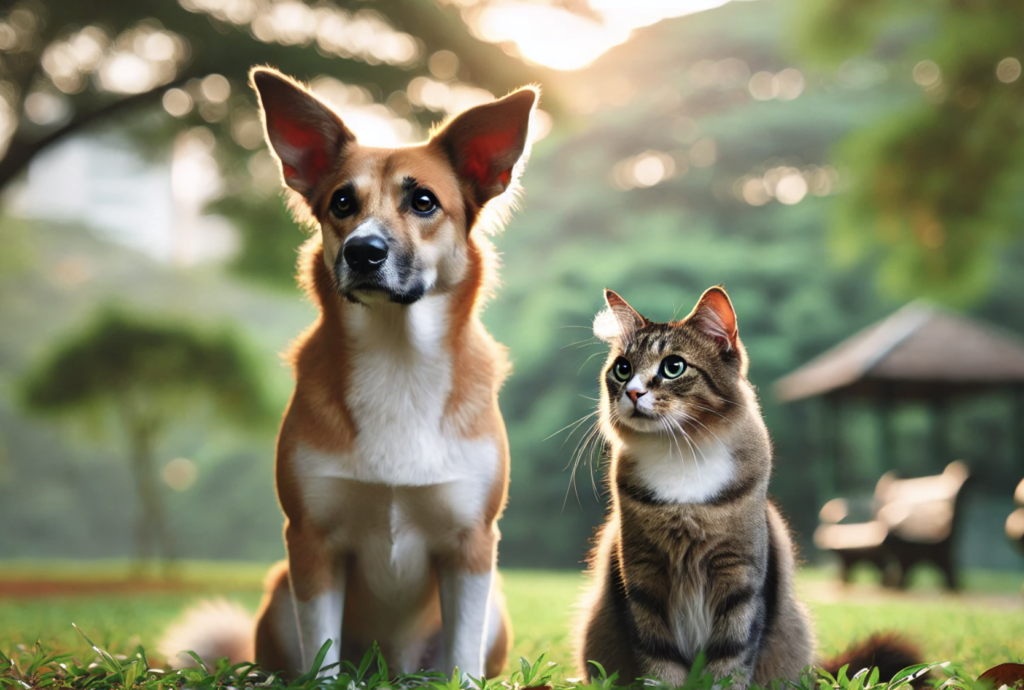
Dogs: Erect ears suggest alertness, while ears pulled back may indicate fear or submission.Cats: Forward-facing ears show interest, flattened ears signal fear or aggression, and swiveling ears indicate they’re listening intently.
- Pro Tip: In both dogs and cats, ears pulled back or flattened are signs they’re feeling stressed or defensive. Give them space and approach calmly.
4. Vocalizations

Dogs: Barks, whines, and growls carry different meanings. A high-pitched bark may be welcoming, while a low growl is a warning.Cats: Cats use meowing to communicate with humans, while purring often indicates contentment, though they may also purr when stressed.
- Pro Tip: Learn your pet’s vocal cues. A high-pitched bark or meow is typically friendly, while growling or excessive meowing could signal discomfort or the need for attention.
5. Body Posture
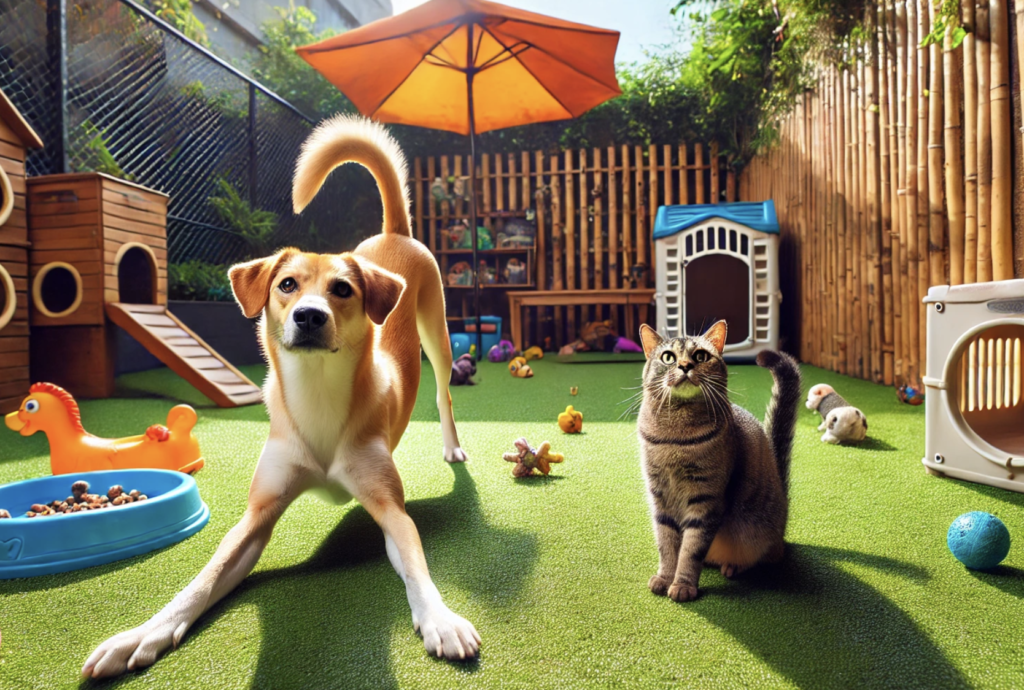
Dogs: A play bow—with front legs stretched forward and hindquarters up—is an invitation to play, showing they feel playful and happy.Cats: An arched back with fur standing on end is a defensive posture that makes them look larger to ward off threats.
- Pro Tip: Observe body posture. If either your dog or cat assumes a relaxed stance, it’s an invitation for play or affection. Defensive postures, like an arched back or crouching, signal the need for space.
6. Bringing Gifts
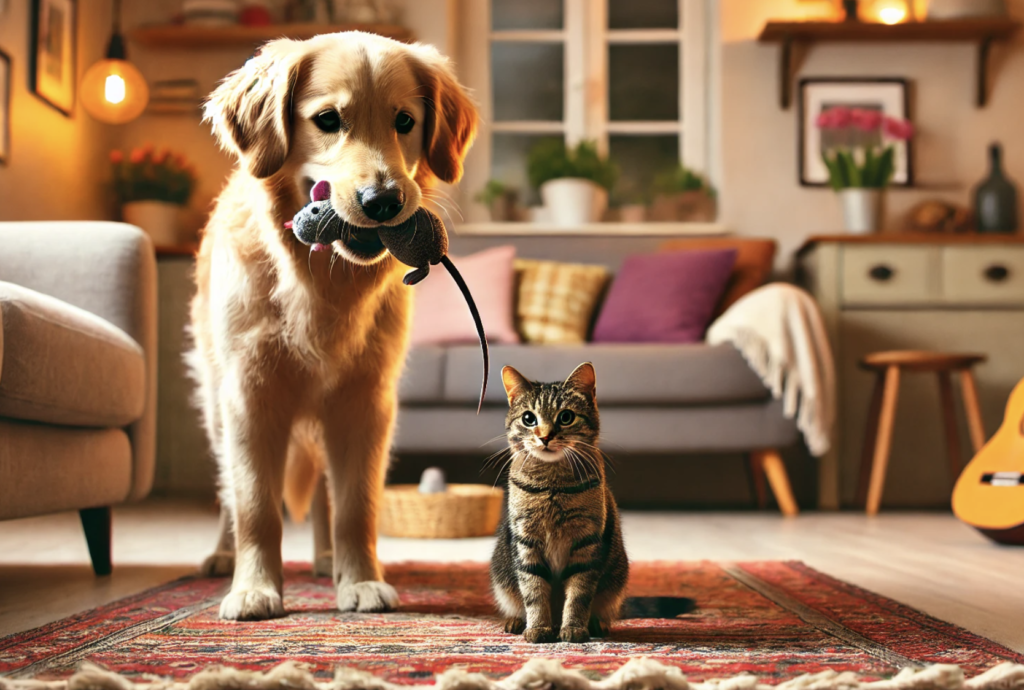
Dogs: Bringing you toys or objects is a sign of trust and a desire to please you.Cats: Cats may bring you prey like mice or birds as a gift, sharing resources or showing affection.
- Pro Tip: Whether it’s a toy from a dog or prey from a cat, thank them gently. They are offering you something as a gesture of trust and love.
7. Licking and Nuzzling
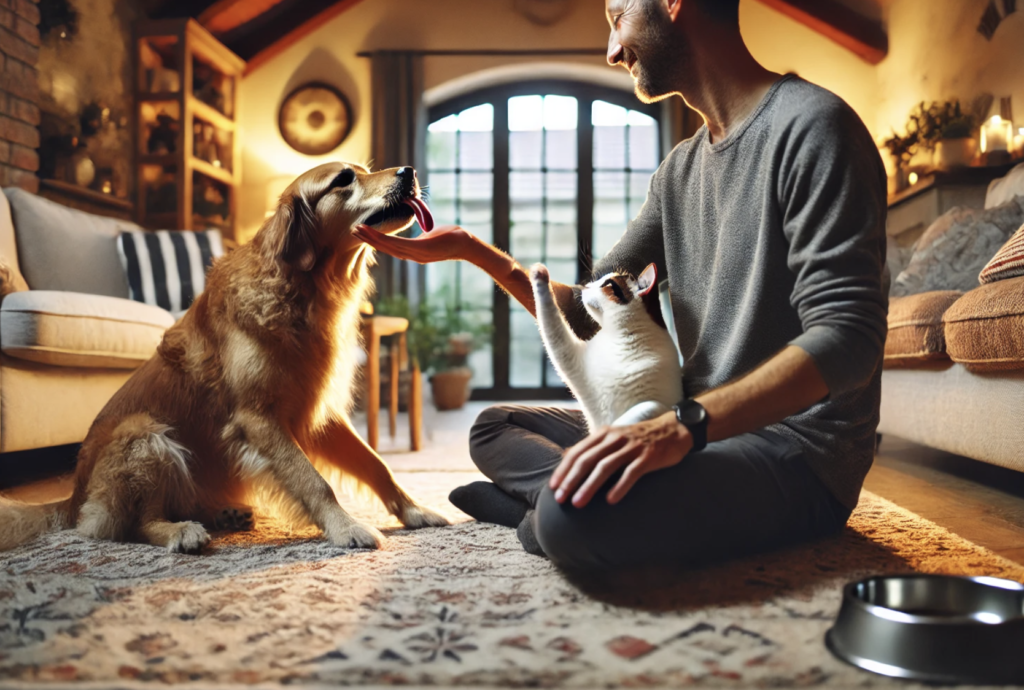
Dogs: Licking your face or hands is a sign of affection or submission.Cats: Head bunting or rubbing their cheeks against you marks you with their scent, showing comfort and ownership.
- Pro Tip: Whether it’s licking from a dog or nuzzling from a cat, these are affectionate gestures. Encourage this behavior with gentle petting to reinforce their sense of security and love.
8. Pawing and Kneading
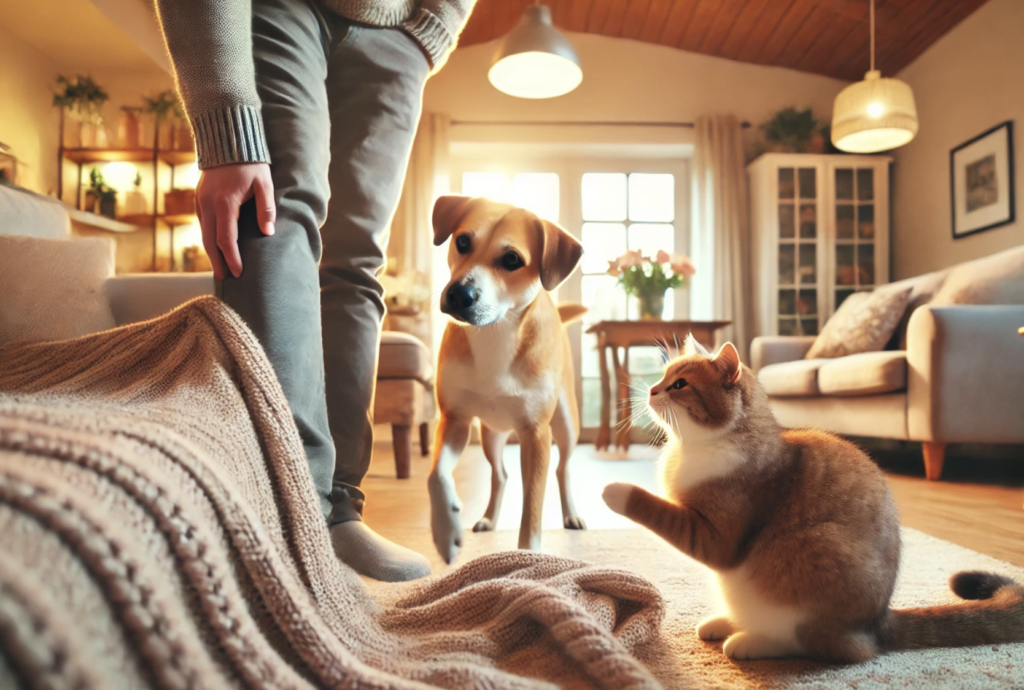
Dogs: Pawing at you is often a way for dogs to get attention or communicate a need, like going outside.Cats: Kneading with their paws is a sign of happiness and comfort, a behavior they retain from kittenhood.
- Pro Tip: In both dogs and cats, pawing or kneading is a request for attention or comfort. Respond by interacting with them through play, petting, or just being present.
9. Changes in Routine Behavior

Both: Sudden changes in eating habits, sleep patterns, or energy levels can indicate stress or health issues in both dogs and cats.
Pro Tip: Keep a close eye on any major behavioral changes. If you notice anything unusual, it’s a good idea to consult your vet to rule out any health concerns.
10. Facial Expressions
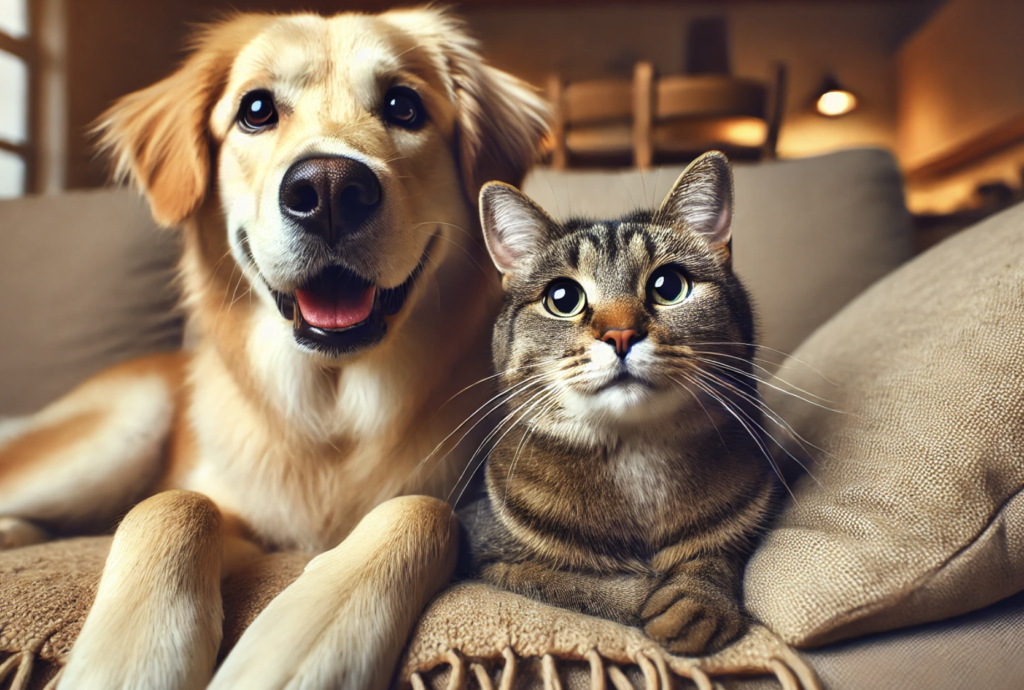
Dogs: A relaxed mouth and soft eyes suggest a happy dog, while a wrinkled muzzle and bared teeth indicate aggression.Cats: Dilated pupils can signal excitement or fear, while slowly blinking eyes and relaxed whiskers show contentment.
- Pro Tip: Whether it’s a dog or cat, soft, relaxed facial expressions indicate happiness. If they show signs of fear or aggression like bared teeth or dilated pupils, approach them slowly and calmly.
Understanding your pet’s unique way of communicating will not only enhance your bond but also help ensure they feel loved and understood.
